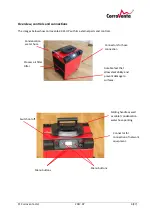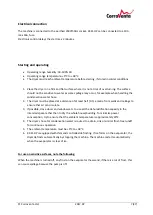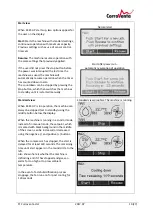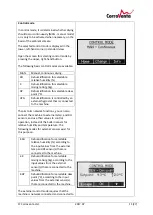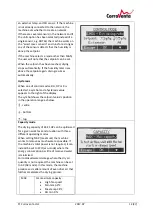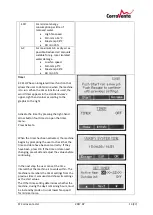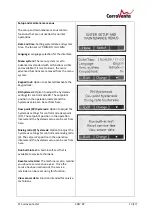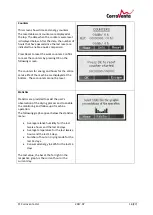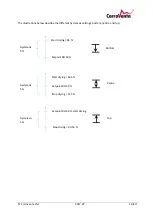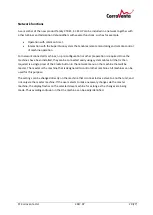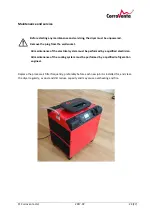
© Corroventa Ltd.
2017.07
19 (27)
Alarms
If the machine detects a fault, corresponding information appears in a pop-up window. Additionally,
a warning symbol appears in the standard view's upper right corner, as long as one or more problems
remain.
The following alarms can appear. Recommended corrective action is also given for each alarm.
Alarms
Action/advice
On or more slaves not responding
This alarm appears when the machine is used as master
in a network that has lost contact with one or more of its
slave machines. If this alarm appears, check all system
cables and the power supply to all machines. When
communication has been re-established the alarm
disappears automatically again.
Ambient temperature too high!
If continuous fan is selected, the fan continues to run.
The machine resumes operation automatically if the
temperature drops.
Ambient temperature too low
The machine resumes operation automatically if the
temperature rises.
No contact with internal control board
Internal fault. If the alarm remains, contact a service
technician.
Internal sensor fault Temp and RH
sensor
Internal fault. If the alarm appears after the machine has
been disassembled, the fault may be because the sensor
connection to the cover has not been installed correctly.
If not, and if the alarm remains, contact a service
technician.
External Temp and RF sensor fault
The machine has lost contact with the external temp and
RH sensor(s). Check that the cables are correctly
installed. When contact with the external sensors has
been lost, the machine automatically returns to using the
built-in temp and RF sensor.
The statistics cannot be saved to the
memory
Internal fault. If the alarm remains, contact a service
technician.
The event log cannot be saved to the
memory
Internal fault. If the alarm remains, contact a service
technician.
Humidity too low
The machine resumes operation automatically if the
humidity rises.
Hot gas sensor fault
Internal fault. If the alarm remains, contact a service
technician.
Stop defrosting takes longer than
expected
Internal fault. If the alarm remains, contact a service
technician.
Compressor operation interruption
Internal fault. If the alarm remains, contact a service
technician.
Fault with temperature sensor in the
evaporator
Internal fault. If the alarm remains, contact a service
technician.
Possible refrigerant leak
Internal fault. If the alarm remains, contact a service
technician.


